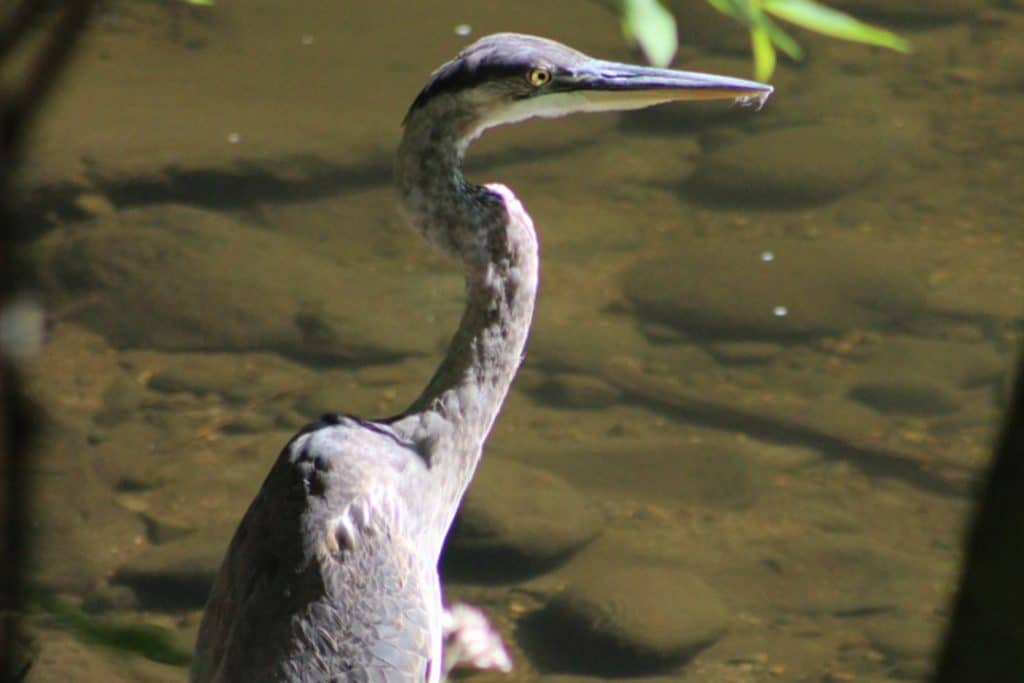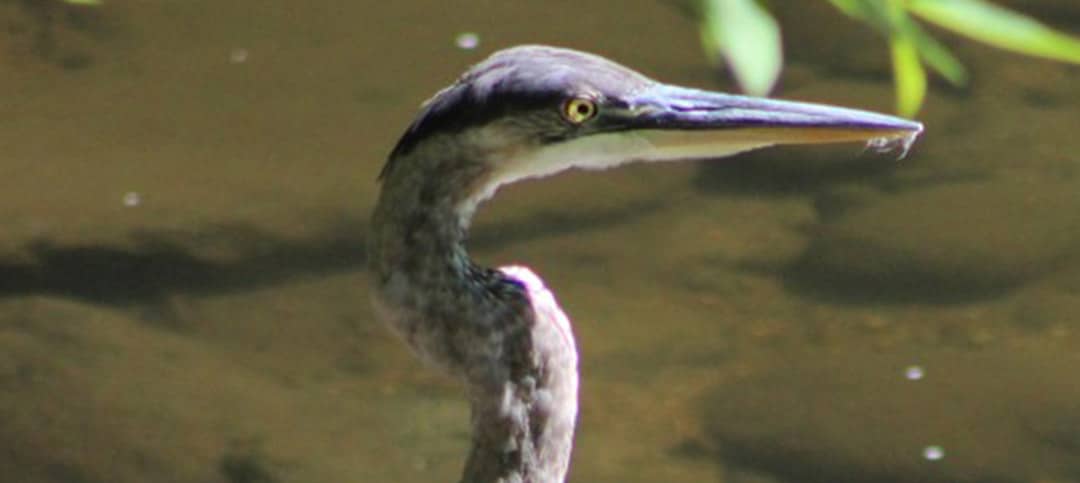Water-obligate birds species like great blue heron, common merganser, and belted kingfisher likely associate low flows with foraging success.
The drought-ridden Shepaug River has experienced decreased turbidity and increased water temperatures resulting in a lack of dissolved oxygen available for aquatic organisms. Coldwater fish like trout and sculpin become stressed in these conditions. Other more tolerant fish like dace, shiners, suckers, and sunfish suffer from enhanced competition. This negatively impacts their fitness and makes them more vulnerable to predators who can now concentrate their efforts in the diminished inundated area. Herons slowly stalk through runs once too swift and silhouettes become more visible to perched kingfishers. In addition, pools no longer offer reasonable refuge from diving birds like common mergansers.
As with most environmental issues, holistic examination often reveals some sort of paradox. You notice an osprey flying upstream with a trout in its talons and a double-digit family of mergansers preening on a series of mid-stream boulders during a hike in Hidden Valley Preserve. It is quite apparent that these birds presently benefit from low flows, but adding a temporal outlook brings to light further ecological effects. If significant numbers of fish in multiple age classes are predated now, there may be fewer young-of-year fish to replenish populations. In turn, riverine birds may not be able to raise as many healthy offspring in succeeding years. Food availability is often not the only limiting factor for reproductive success and distribution in avian species. For example, belted kingfishers identify a nest site before establishing a hunting territory based on riffle length and productivity. This species relies on the other extreme in flow (flooding) to erode banks and create their preferred nesting habitat.



